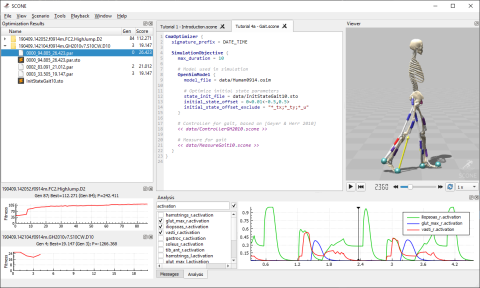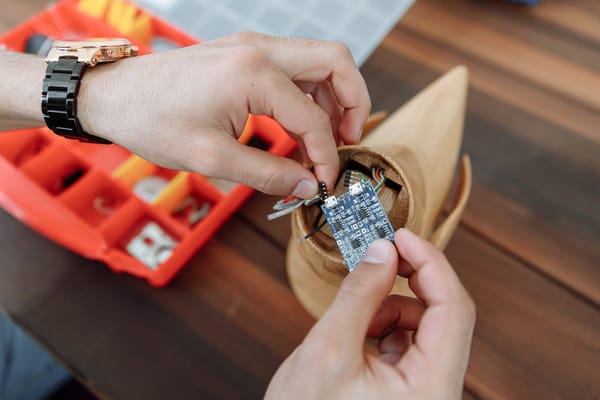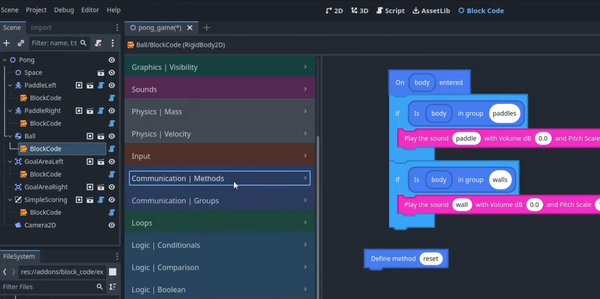Top 15 Free Open-source Medical Simulation Projects for Windows, Mac OSX, and Linux
Are You Truly Ready to Put Your Mobile or Web App to the Test?
Don`t just assume your app works—ensure it`s flawless, secure, and user-friendly with expert testing. 🚀
Why Third-Party Testing is Essential for Your Application and Website?We are ready to test, evaluate and report your app, ERP system, or customer/ patients workflow
With a detailed report about all findings
Contact us nowTable of Content
Note: This article is an Evergreen article. It will receive continues update about the listed applications. You can save it and return to it as a updated resource.
Over than 14 years ago, I wrote in my old blog about medical simulation tools especially surgical based simulator, by that time there was very limited options or DIY ( Do It Yourself ) to get the required results, luckily for the new generation of developers, medical students, and medical professionals, there are many alternatives out there now.
In here we will promote open source medical simulation projects, aiming to make it easier for doctors and students as well as the developers to find the tool they need.
Hopefully, we expect more by the next years especially open-hardware ready medical simulation projects, as there is only one project in this list that supports RaspberryPi.
Open source Medical Simulation projects
1- SOFA

SOFA is an open source physics simulation project that provides a real-time 3D simulation. SOFA was built as a general purpose physics-simulation tool aiming to provide a medical simulation framework as well.
SOFA is in continuous active development, by a team of developers, who provide rich documentation, and marketplace for SOFA based simulations.
SOFA was built using C++ and it runs smoothly on Windows, Mac OSX and Linux.
2- IMSTK: Interactive Medical Simulation Toolkit for surgical simulation
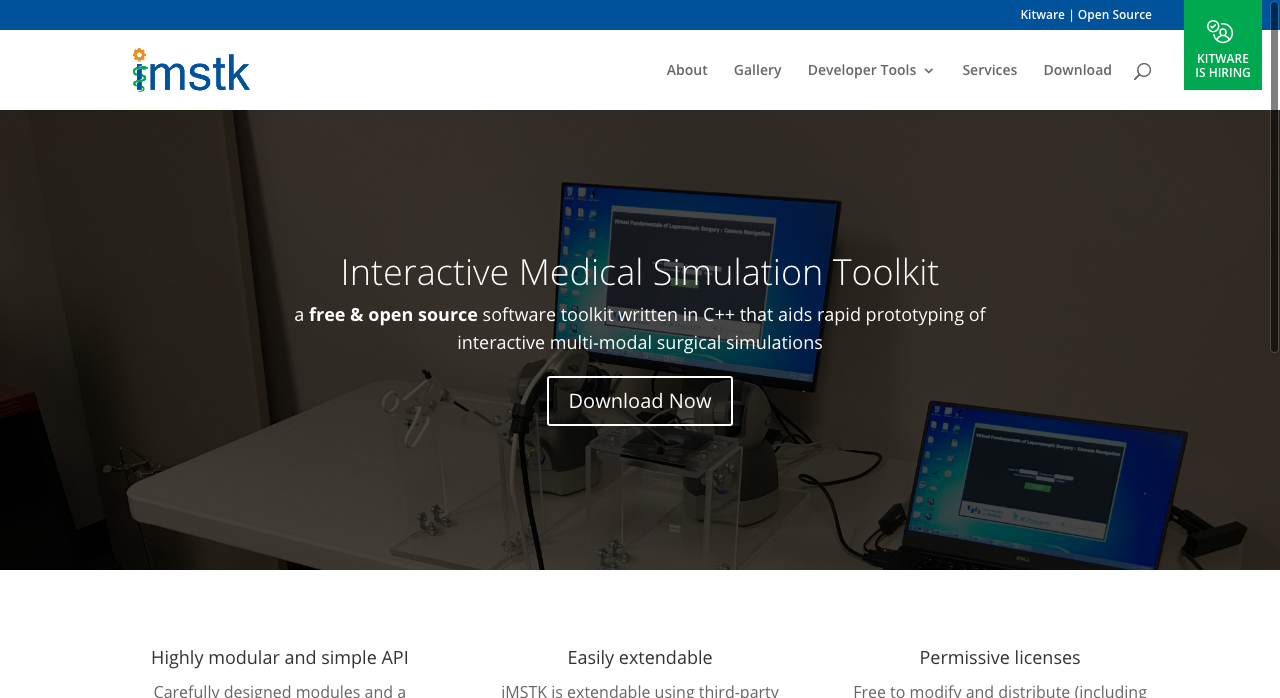
IMSTK ( Interactive Medical Simulation Toolkit ) is an open source modular C++ based toolkit, carefully designed with developer-friendly API and documentation. It gives the developer the right tools for rapid effective surgical simulation prototyping and production ready projects.
IMSTK has rich developer documentation and a powerful API. There are courses provided by Kitware and several books aiming for developers.
IMSTK's gallery has an impressive application for it including Camera Navigation for Laparoscopic Surgery simulation, Virtual Airway Skill Trainer (VAST) which is Developed at CeMSIM-RPI, Virtual Airway Skill Trainer (VAST) provides a safe training environment for clinicians to learn the airway management techniques , Virtual Endoluminal Surgical Simulator (VESS), Virtual Osteotomy Trainer and Virtual Kidney Biopsy Trainer, All are created with IMSTK.
3- OpenSurgSim: Open source Surgical simulation development platform
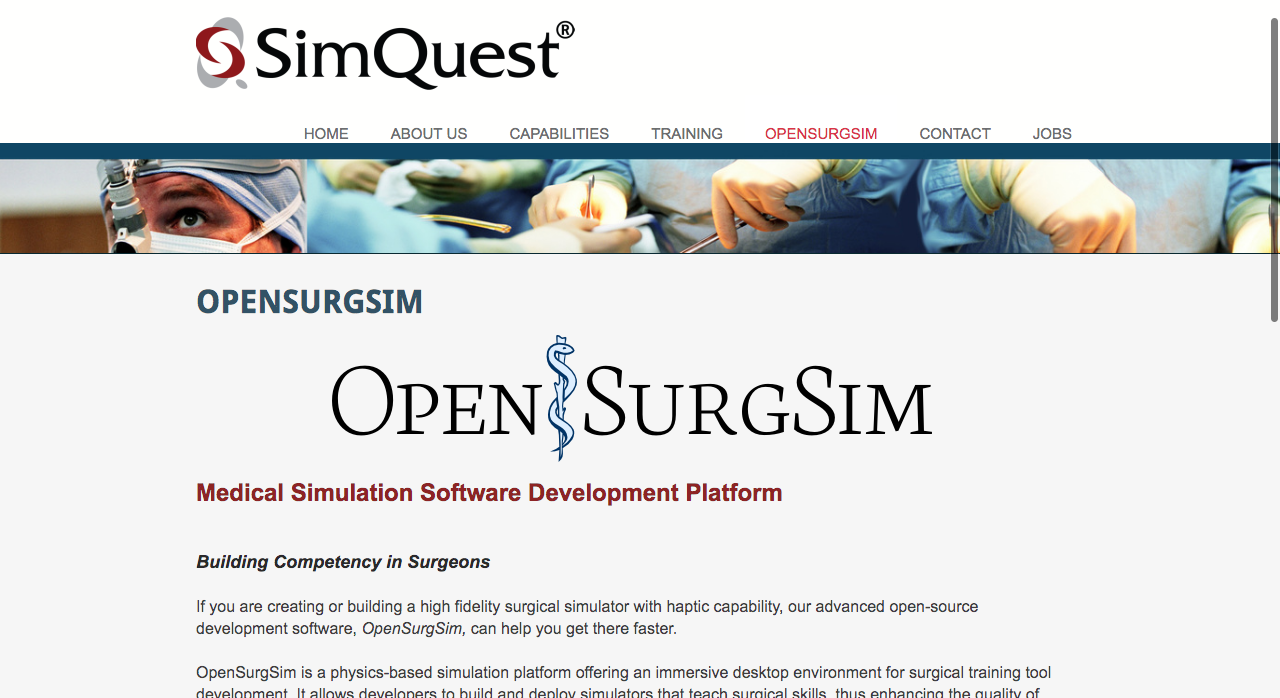
OpenSurgSim is a free open source surgical simulation platform aiming for developers to help them build desktop rich surgical training simulation apps with ease.
OpenSurgSim has a set of simulation ready tools and models including surgical tools implementation tool, 3D advanced realistic graphics, advanced metrics, and minimally invasive surgeries' simulation tools.
It was released for free as an open-source project by SimQuest, a company specialized in medical/ surgical simulation, which is also provides training and a set of other services including data analysis, decision-making models design.
4- Vital Sign Simulator

Vital Sign Simulator is a Windows-based program to simulate vital signs and ACLS-Scenarios, It was developed by Florian Schwander, a specialized emergency room nurse and simulation instructor/technician.
Mr. Schwander has provided full comprehensive details on how to implement and use Vital Sign Simulator with different hardware setup in his blog.
Vital Sign simulator is the only free and open-source tool that really compete with the commercial expensive sets which are designed to do the same.
I believe this tool has to be ported to Linux and Mac OSX, sadly it was built by MS. Visual Basic for Windows only now.
5- Emergency Room Simulator for ( Mobile App )
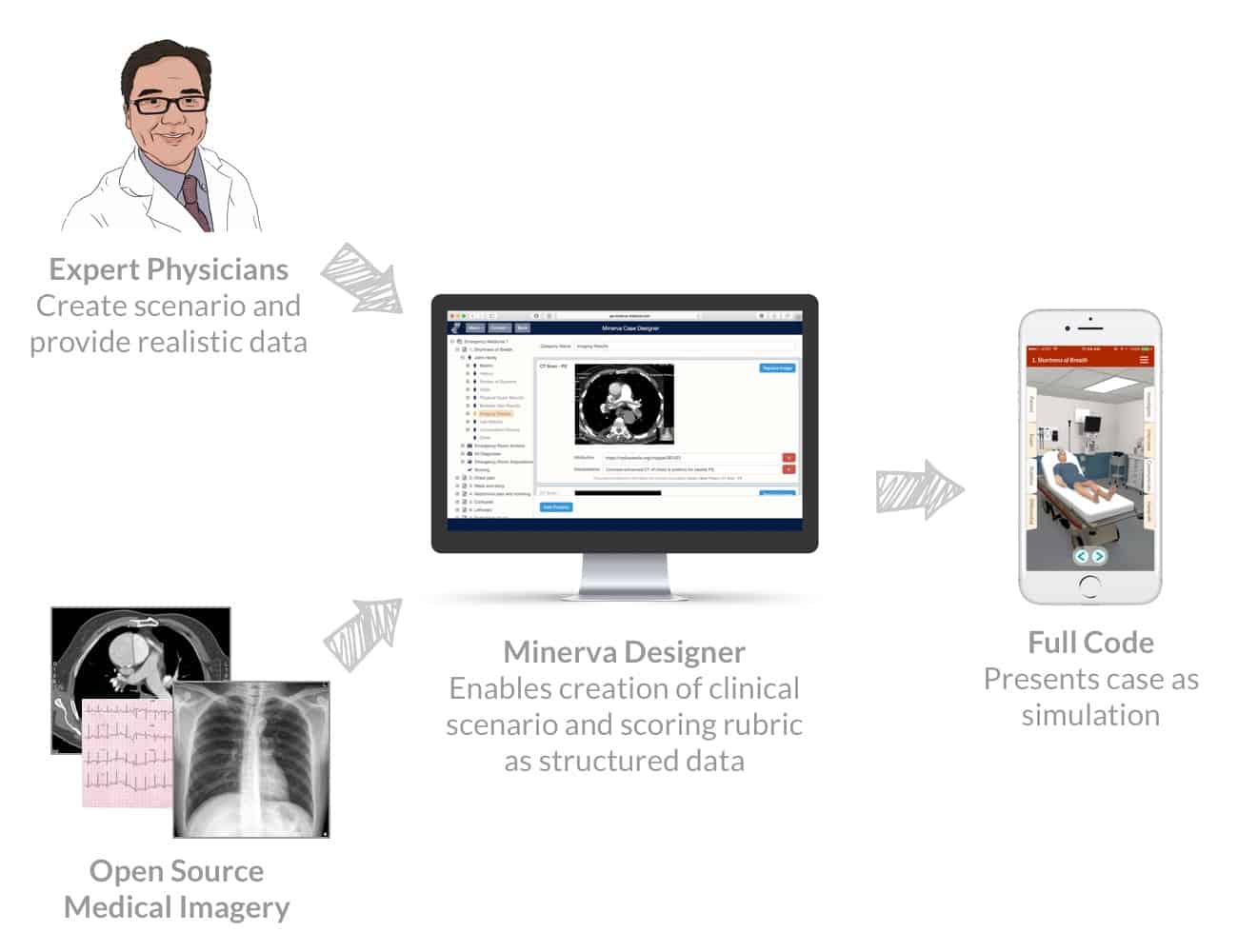
Emergency Room Simulator is a free mobile app for Android and iOS, built to help doctors and nurses practice simulated emergency room cases. It has also a browser-based version for Google Chrome and Safari.
The app was built to simulate real-life emergency room cases, with unique cases which give the trainee wide ground to extend their skills. the trainee can choose between dozens of possible medications, procedures, which help the doctors to train totally hand-free without touch the real-patient. The cases are designed by professional doctors who create a realistic scenario based on accurate data.
Though, its free it has additional features available in in-app purchase.
6-SimVascular
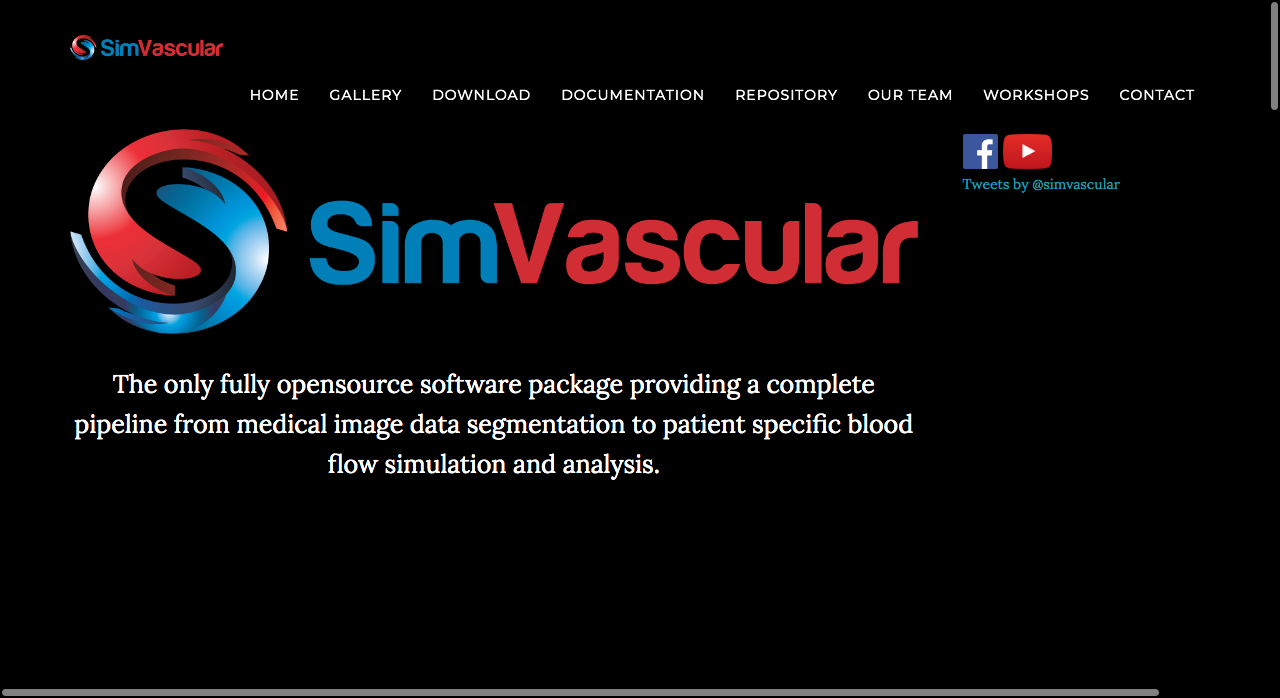
SimVascular is an open source free software for cardiovascular simulation, It has a full production flow to provide highly detailed 3D cardiovascular models, with a dynamic animated simulation that supports dynamic variables. It supports DICOM images, 2D and 3D views that comes with advanced mesh tools and comprehensive geometric modeling.
SimVascular has rich user-interface, easy to use, especially with data manager that allows importing and exporting data sets.
SimVascular is available for download for Windows, Linux and Mac OSX, in installable ready packages. which makes it easy to install especially for doctors with no coding experience.
7- BioGears
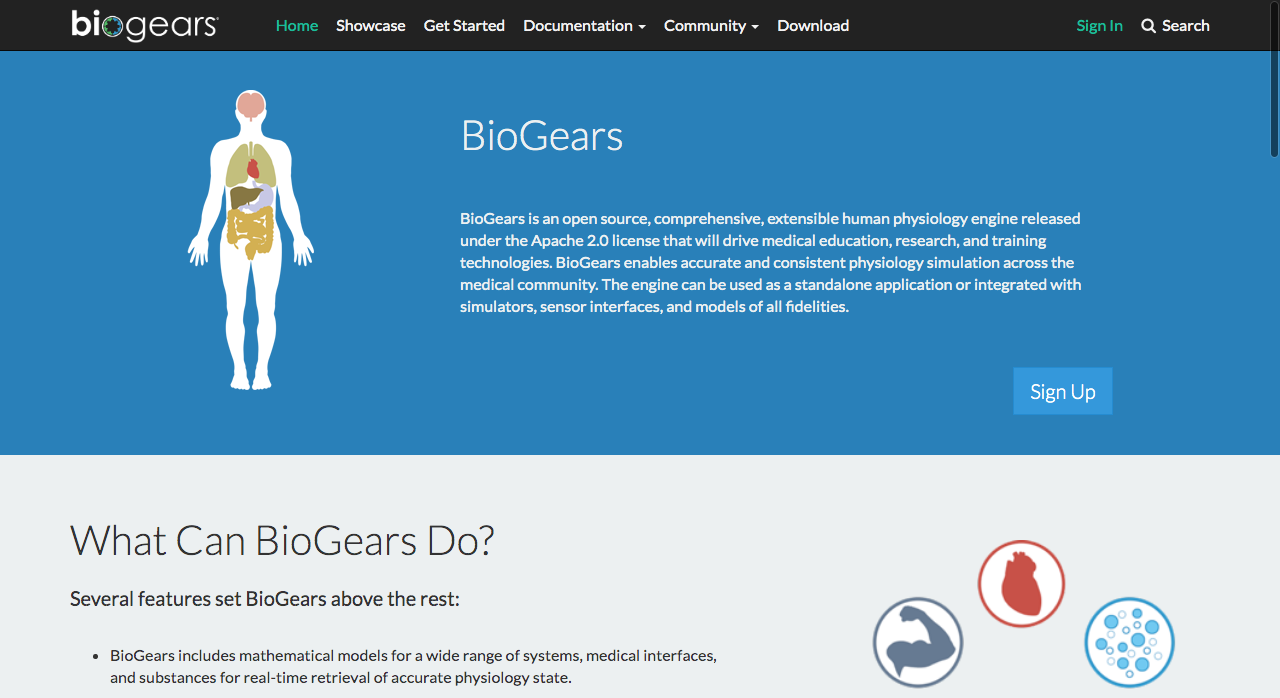
BioGears is a human physiology simulation platform, It's released under Apache2.0 licenses as an open-source project.
BioGears is packed with advanced complex mathematical models to simulate human physiology in real-time, all packed within a GUI featuring scenario manager. Which makes it easier to create training scenarios for off-patient medical training in a desktop environment.
Cross-platform feature for BioGears is far more unique than it's a competitor as it supports RaspberryPi alongside many operating systems like Windows, Mac OSX and Linux, It's the luxury of comprehensive C++ codebase BioGears has. According to BioGears download statistics, It has been downloaded 6936 times last year.
BioGears targets researchers, medical educators, and students, but the development team also released a developer-friendly toolkit with SDK to help developers integrate it within their applications
BioGears team has released a list of simulated systems including the cardiovascular system, blood chemistry, drugs, endocrine system, complete gastrointestinal system models, central nervous system ( CNS ), peripheral nervous system ( PNS ), Renal and respiratory system models. All of the systems have been well documented for end-user and developers.
8- Pulse, Physiology Engine: open-source Physiology simulation engine
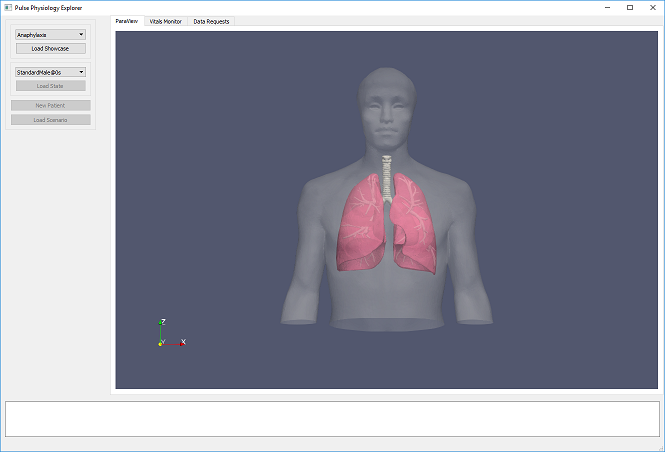
Pulse is a C++ powered multi-platform rich human physiology simulator, It was built to extend the medical training experience in the virtual patient-free and stress-free environment. It built on a modular concept as it allows the users to create their own modules or use existing system modules it provides.
Pluse can be used as standalone desktop software and it can be integrated into other application and hardware as it provides developers with battle-tested integration kits as anesthesia machines, and inhalers.
Pulse has a powerful GUI visualization tool to render, visualize the data its called: The Pulse Physiology Explorer, it's available to download for Windows and Linux ( Ubuntu ).
Pulse has been released under Apache2.0 license ( open source ), and it works smoothly under Windows, Linux and Mac OSX.
9- OpenSim
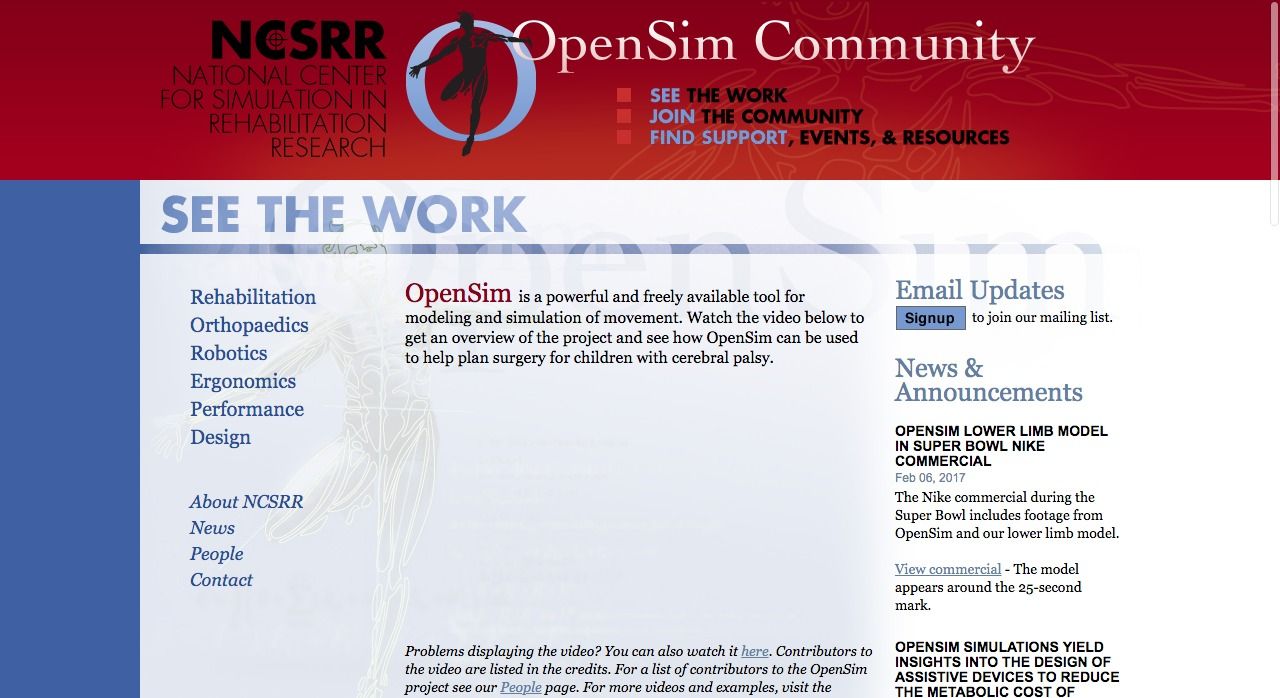
OpenSim is a free tool for modeling and simulation of human movement, built by a team of Stanford University, it provides a powerful musculoskeletal dynamic movement simulation which helps simulation and planning treatment of many musculoskeletal related disease, procedures as spinal cord injury, stroke, cerebral palsy, and osteoarthritis.
OpenSim can be used also to model/ design and simulate robotic movements, and ergonomic products design simulations.
OpenSim is available for Windows and Mac OSX, Unfortunately, it's not yet available for Linux.
10- CESE: Cell Electrophysiology Simulation Environment
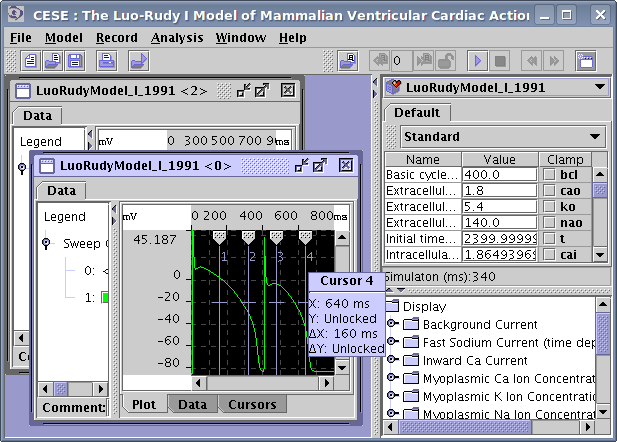
CESE is an open source cross-platform Cell Electrophysiology Simulation Environment, A modular environment with dozens of simulation-ready models, It was built with Java so it works well on the popular desktop operating system, though the project has not updated for years ( last updated 4 years ago ), it is still getting download hits and users.
CESE is released under GPLv2.0.
12- Chaste (Cancer, Heart and Soft Tissue Environment)
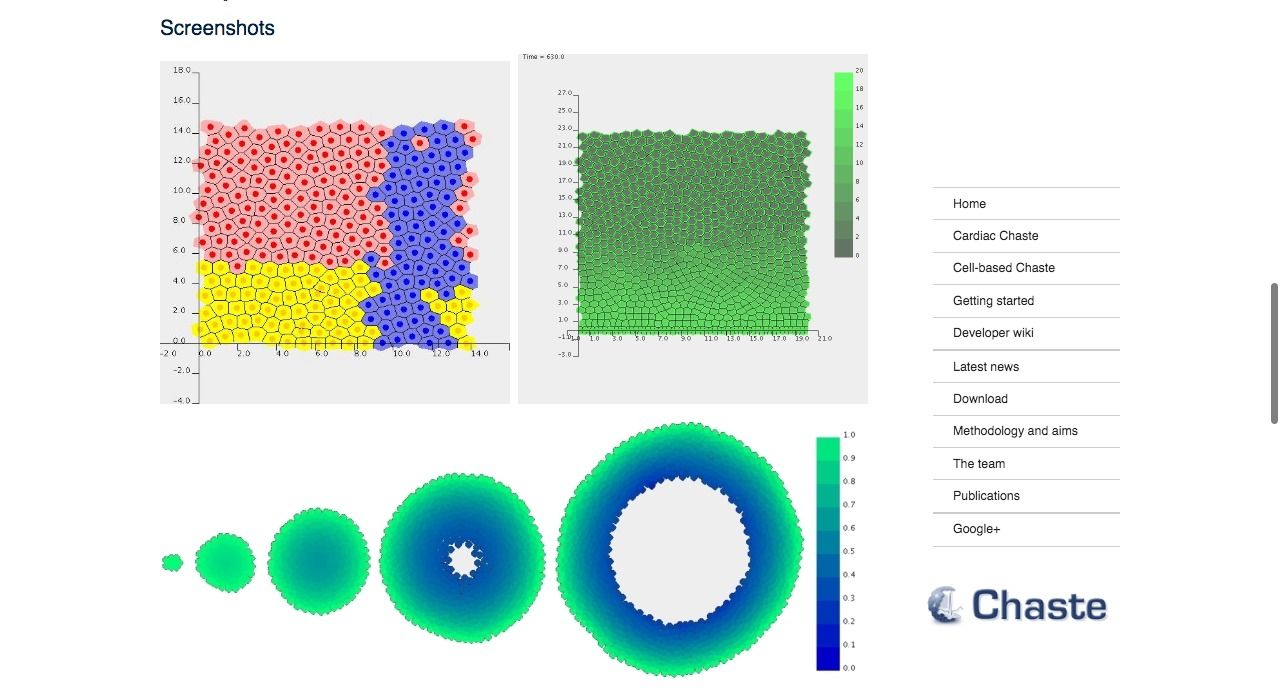
Chaste is a simulation package for Cancer, Heart and Soft Tissue Environment, It was built by a group of researchers from Oxford University.
Chaste's team has released different variations of the original package: Cardiac Chaste for cardiac electrophysiology simulation, and Cell-based Chaste: a multiscale computational framework for modeling cell populations.
Chaste's license: The earlier versions of Chaste have been released under LGPL 2.1 license till Chaste 3.0, while the new releases after 3.0 were released under 3-clause BSD license.
Chaste new versions work on Windows, Linux and Mac OSX. While old versions require a virtual machine with Ubuntu Linux installed to be able to work on Windows and Mac OSX.
13- CellML
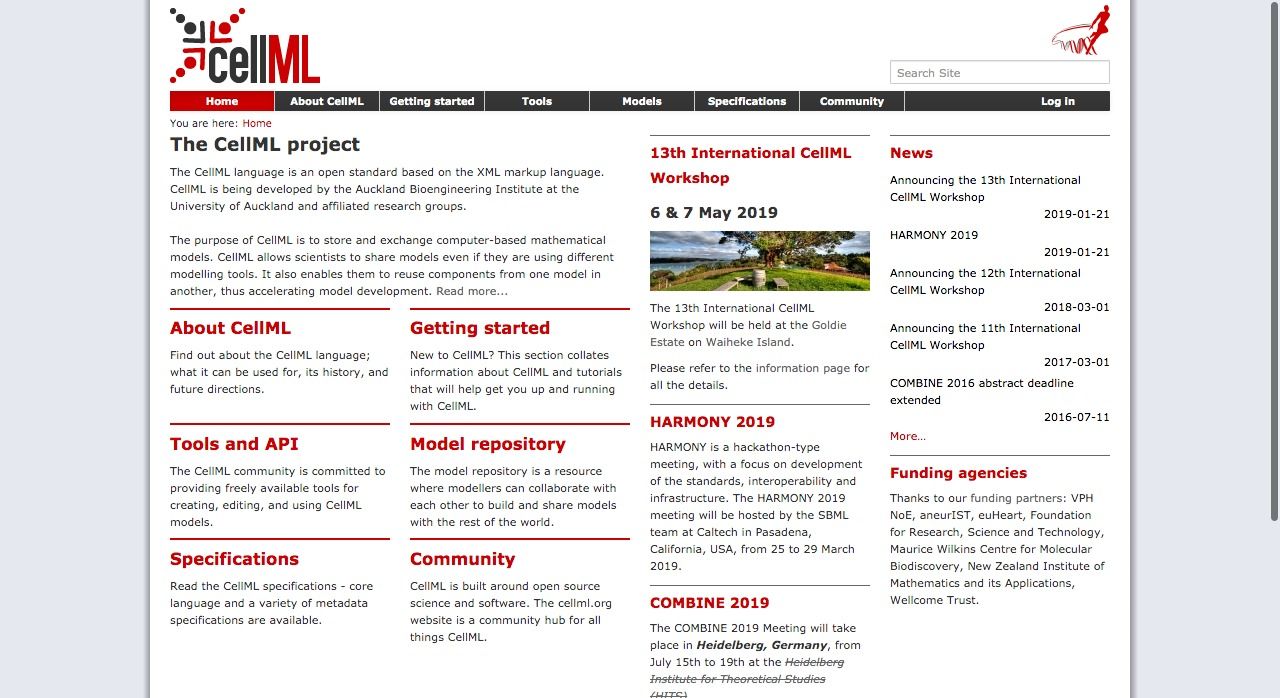
CellML is an open standard XML based language, It was designed to describe mathematical models of cellular biological function.
CellML was developed by a team from Auckland Bioengineering Institute in Auckland University.
The main purpose of CellML is to create a tool-agonistic model for easy sharing, which helps accelerate the development and production.
CellML has a rich set of shared models classified with categories as Electrophysiology, Cardiovascular Circulation, Hepatology, Immunology, Neurobiology, pH regulation, Protein modules, Endocrine, Gene regulation, Cell migration and more.
14- CVSim: An Open-Source Cardiovascular Simulator.

CVSim is an open source simulator for the cardiovascular system, It was developed by a team from MIT and Harvard Medical school and used in training since 1984. Its one of the oldest simulation kit developed yet. The development started in the year 1983 till 2007.
CVSim was originally written in C and the user-interface was developed using Java. It's a lightweight program and working very well on the new machines even though it has not been in active development since 2007.
15- XNBC: A Neurobiology Simulation tool
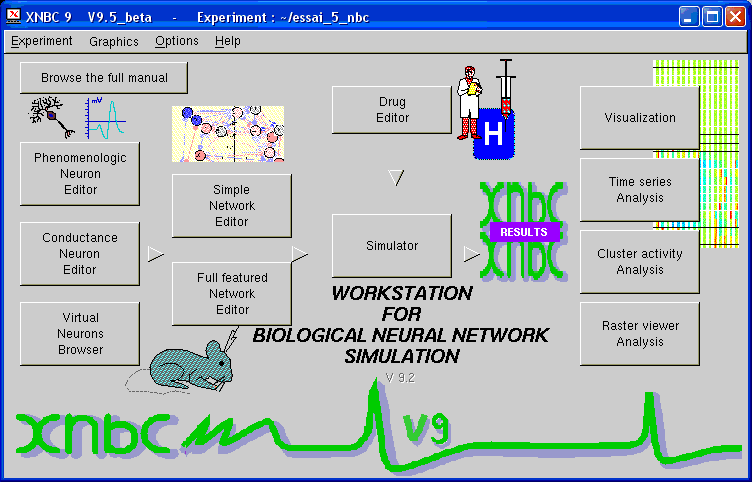
XNBC is an open source easy-to-use neurobiology simulation software, It was built to be extensible, as backed with powerful yet simple user-interface that includes advanced simulation features as Neuron editors, Network editor, Drug editor, and analysis tools which backed by visualization tools.
XNBC is available to download for free for Windows and Linux operating systems. As it was written in pure C code, I think it can be compiled on Mac OSX, as it supports UNIX based systems, but there is no OSX package for download.
16-jCpSim: Java CardioPulmonary SIMulations
jCPSim: Java CardioPulmonary Simulation is a cross-platform simulation toolkit for CardioPulmonary processes simulations as respiration and circulation, It can simulate medical therapy as ventilation therapy.
jCpSim was built by Java, so it supposed to work on Mac OSX, Linux distros, and Windows machines. The developer(s) released it under LGPLv2.0.
The project hasn't been updated for years, but it's getting a good amount of weekly downloads.
Update: May/17/2019
18- Gimias: Open source Medical Imaging Simulation and Analysis for Windows and Linux
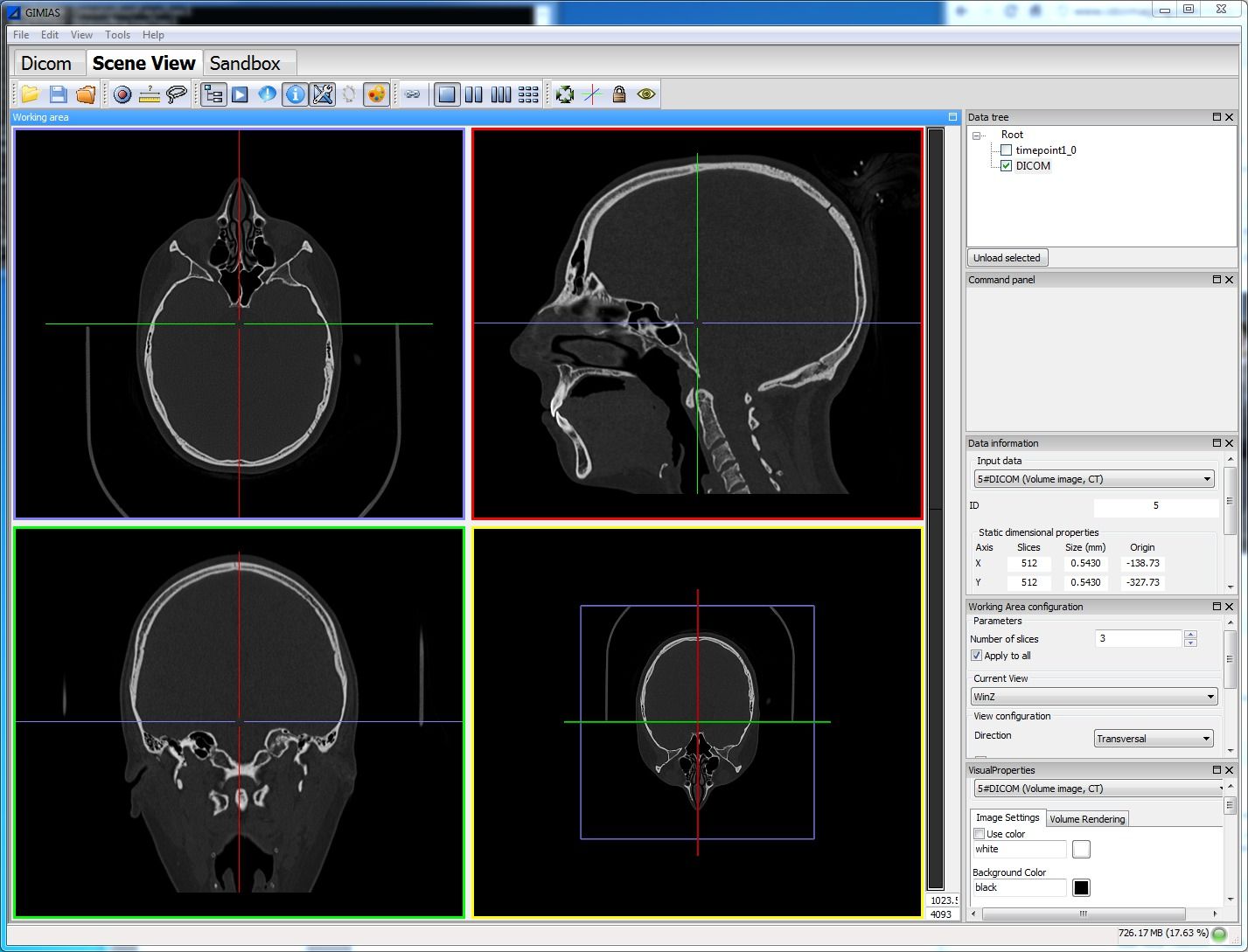
Gimias is an open-source framework for building medical imaging simulation and analysis applications. It has many features and prototype suites and being used by many companies, researchers around the world. For more details read our review.





